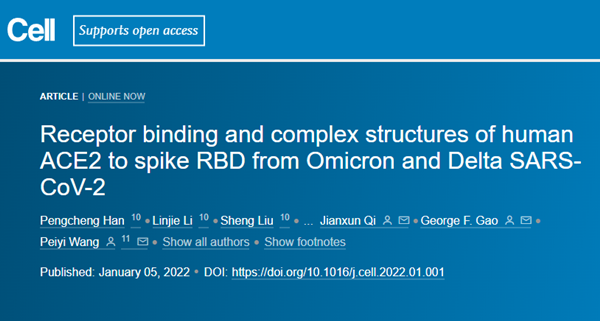Home> News
Researchers reveal molecular mechanism of highly contagious Omicron
Updated: 2022-01-07 (Cell)
Researchers from the Southern University of Science and Technology and the Institute of Microbiology at the Chinese Academy of Sciences published a paper in Cell, a journal publishing findings in experimental biology on Jan 5, illustrating the binding properties between the human receptor ACE2 (hACE2) and the VOC RBDs.

Receptor binding and complex structures of human ACE2 to spike RBD from Omicron and Delta SARS-CoV-2 is published in Cell on Jan 5. [Photo/cell.com]
Entitled Receptor binding and complex structures of human ACE2 to spike RBD from Omicron and Delta SARS-CoV-2, the paper also probed into the crystal and cryo-EM structures of the Omicron RBD-hACE2 complex, as well as the crystal structure of the Delta RBD-hACE2 complex and identified the role of key residues for receptor recognition through examining several VOCs, including Alpha, Beta, Gamma, Delta and Omicron.
Researchers found that Omicron RBD binds to hACE2 at a similar affinity compared to that of the prototype RBD, probably because of the compensation of multiple mutations for both immune escape and transmissibility. The complex structures of Omicron-hACE2 and Delta-hACE2 revealed the structural basis of how RBD-specific mutations bind to hACE2.
The paper presented important molecular information about both Omicron and Delta VOCs and may provide guidance for the development of novel prophylaxis or therapeutics targeting the Omicron variant.
Click to view the full text: https://www.cell.com/cell/fulltext/S0092-8674(22)00001-0#relatedArticles
